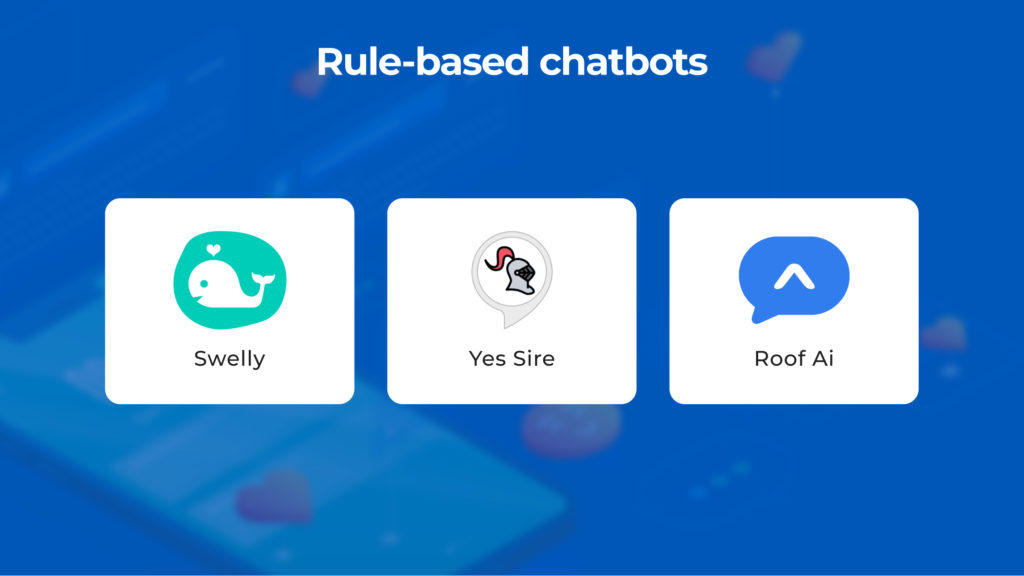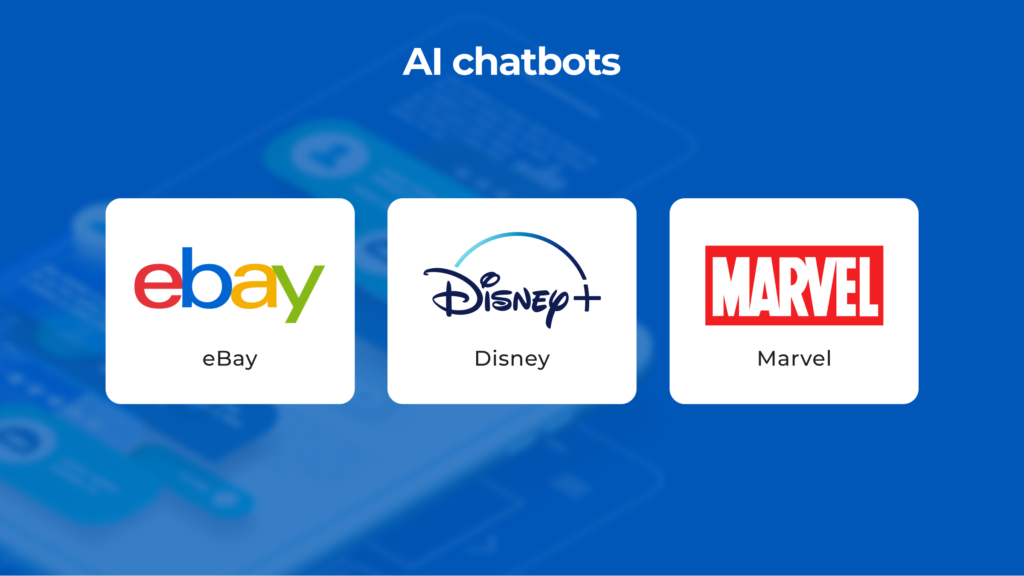Today, we go to a digital realm to get most of our services. Regardless of whether they are related to the business field, healthcare provision, or leisure activities, digital assistants have become a constant intermediary between us and the desired outcome.
No wonder then that the efficiency of human-computer communication determines the overall success of all kinds of operations involving a digital compound. A cornerstone of attempts to optimize such interactions is a chatbot.
And what is a chatbot, anyway?
A chatbot is a digital assistant called to replace humans when handling various requests, inquiries, or issues occurring on the user side via interacting with a web product. Depending on the tech stack’s flexibility and their general capabilities, artificial chatbot agents can perform tasks of different complexity.
For instance, a simple chatbot, requiring no code or close to no code means upon its development, is sufficient for single-type, routine tasks. Alongside, talkbots empowered by artificial intelligence and Machine Learning (ML) technologies are capable of handling more ambitious goals, demanding truly creative approaches “a la human”.
How Brands Can Leverage Chatbots
In many spheres, people are predicted to be replaced by robots for the sake of greater productivity. To this end, Customer Service is a rare example of a field that does not only need such an upgrade but is already experiencing it.
A short list of benefits for e-business provided by chatbots opens up with better customer engagement and retention rates. No more waiting in queues till a CS specialist is done with a pack of previous inquiries and is available for the next one. With a chat, customers receive the needed assistance in real-time, precisely the moment they actually need it. The absence of delays in handling customer requests also significantly increases engagement and retention rates as talk bots secure customer journeys and ensure loyalty.
Additionally, implementing a chatbot into your e-business means significantly better human resource management. While an AI assistant copes with homogeneous tasks that do not demand the participation of a human being, such as a password reset or the latest discounts provision, “natural” human customer support specialists can fully concentrate on non-standard cases, requiring a creative approach. Not to mention that it helps to cut down expenses on the Customer Service team.
The list of chatbots’ capabilities includes but is not limited to the following:
- supporting customers in different languages;
- answering FAQ;
- sending push notifications;
- catering needs of messengers, social networks, and websites in a targeted manner;
- providing narrow-field services, such as booking, reservations, selling, etc.
How Chatbot Works
Machine ability to understand human speech and interpret it correctly implies its ability to read the meaning penetrating the symbols of written speech or the shape of sound. The ability of chatbot to do it comes from the extent of its initial data fertility. The more meanings attached to its audio and visual expressions a chatbot has under its command, the better will be its ability to understand the request and fulfill it correctly.
Additionally, currently chatbot technology evolves with the help of other technologies, mainly based on Artificial Intelligence. One of the most acute examples to this end would be Natural Language Processing (NLP) and Natural Language Understanding (NLU).
As long as the scale of chatbot’s functionality relies on the span of human language proper interpretation, AI driven studies are key to this end. Namely, NLP is a specific division of AI concerned with the machines’ linguistic skills’ development. The thing is, natural human languages are quite chaotic and lack standardization, which can work perfectly fine for people, but not computers.
NLP studies, using machine learning (ML) approaches, are engaged in analysis of natural languages broken down into smaller pieces and revealing inner logic of its particles. Alongside, NLU is a subset of NLP that targets a narrower goal of understanding the meaning of distinct sentences.
Types of Chatbots
In general, all chatbots are divided into rule-based and AI-based. The bots referred to as rule-based are limited in their abilities to a narrow range of tasks. But although such bots cannot do a coherent analysis of the user’s request, they are totally suitable for fulfilling simple and precise inquiries.

Rule-based chatbots
For example, scripted, or quick reply, chatbots use the hierarchical decision tree to communicate with a user. The interaction with such virtual assistant is mostly supported by a fixed variety of predetermined questions put into the bot’s lexicon. Menu format of quick reply bots is, perhaps, the most popular one as it allows a customer to make a shortcut to a category of interest. Keyword recognition is another option for the rule-based chatbots. The user request gets broken down into keywords on which the bot relies to produce a relevant output. These two options are combined in a hybrid chatbot, where users get to choose a preferred way of virtual helper’s assistance.
When it comes to artificial intelligence used as a bot’s baseline, the result is qualified for solving more complex tasks. The AI bots are mainly divided into contextual and voice-enabled ones. Contextual bots have gone beyond “if/then”
function. ML and AI technologies implemented upon such bots’ creation enables the software to “remember” information provided by a customer, analyze it, and use it in further communication. Such context-centric approach allows addressing customer requests in a drastically more personalized and qualitative way. It’s almost the same with voice-enabled assistants, excepting that the bot receives user requests in a spoken form. Individual approach here is enhanced thanks to the voice recognition abilities of the bot (e.g. Siri, Cortana, Alexa).

AI-based chatbots
A Chatbot’s Creation
With a chatbot, it’s hard to tell for sure how challenging the creation process is gonna be until you identify this software’s goal. Depending on the complexity of tasks, a chatbot may be a close to no coding solution (or even do not require code at all) or a full-fledged software based on AI and ML technologies. Cost to build a chatbot also varies according to the complexity of the development process and the region of hiring.
Simple chatbot creation solutions, which require only a minimal tech background, are called bot constructors. Some examples of such constructors are Google Diagonflow, Chatfluel, Motion.ai, etc. This software offers an intuitive interface and step-by-step instructions on how to create a bot complying with your needs.
Still, regardless of the chatbot’s type, both rule- and AI-based digital assistants include the following 5 steps upon their creation from scratch:
- Identify your users’ pains and expectations.
- Choose a platform where a chatbot’s implementation is meant.
- Determine technologies and frameworks to use.
- Develop a chatbot yourself or delegate the task to experienced specialists.
- Test the result.
Thus, there are several scenarios of chatbot creation ranging from the easiest to the most resourceful option. Depending on your project’s unique requirements, you can choose whether to create a chatbot on your own or go for the assistance of a professional team. But regardless of which way of chatbot creation you pick, your e-business will definitely benefit from a ground-breaking technology accelerating human-computer interaction, which a chatbot is in the end.
Author’s bio
 My name is Katherine Orekhova and I am a technical writer at Cleveroad – mobile app development company. I’m keen on technology and innovations. My passion is to tell people about the latest tech trends in the world of IT.
My name is Katherine Orekhova and I am a technical writer at Cleveroad – mobile app development company. I’m keen on technology and innovations. My passion is to tell people about the latest tech trends in the world of IT.

